Chained Echoes: A Review
"We wanted to change the world"

In a year of stellar titles that have pushed the definition and boundary of the medium itself—from AAA opuses to indie masterpieces—receiving Chained Echoes so late in the year feels like an extra helping of dessert. While the RPG genre is filled with swords, magic, heroes, and warfare, it is not so often that the classic design is used in such a modern, and memorable, way. Both an admirable celebration of the games of yesteryear and a look into what gold can still be wrung from the genre, Chained Echoes is a game that defies expectations on all fronts.
Crafted almost singularly by Matthias Linda across seven years(!), Chained Echoes feels both new and familiar in magnificent ways. While the pixel art and traditional turn-based style evoke many of the RPG favorites such as Chrono Trigger and Final Fantasy VI, Chained Echoes cannot be defined by its surface-level aesthetics. This RPG contains the breadth of what is expected from the genre: deep character customization, an incredibly satisfying battle system, gorgeous music, complex characters, and a storyline that challenges governments and gods.
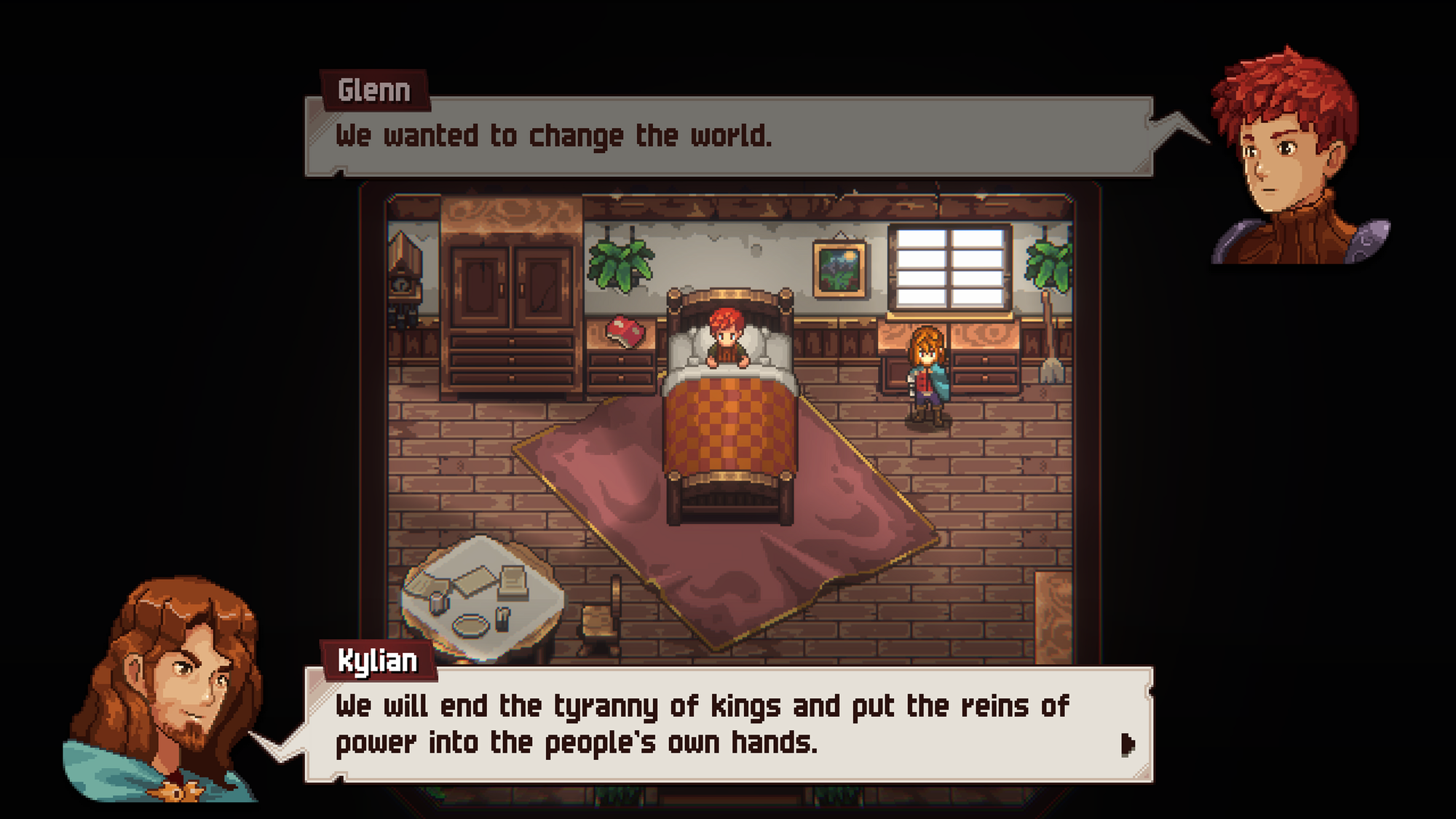
Aside from some secondary freelance work and the musical composition, Matthias Linda designed Chained Echoes alone. It's quite an undertaking to develop an indie RPG, even with the tools available today. To craft a 40-hour RPG with dozens of characters and quests, not to mention a massive world to explore, is an undertaking most of us might abandon. Backed by Kickstarter and his own motivations, Linda has gifted us a game that feels worthy to stand tall against some of the most impressive RPGs of the last decade, and perhaps beyond.
Champions of Fate
Indie RPGs are nothing new. While the scene is regularly visited by grandiose epics that attempt to emulate the style of past games, rarely do we receive an experience that feels as though it has been competently crafted from a place of real respect and ingenuity. While Chained Echoes certainly feels like Final Fantasy, Chrono Trigger, Xenogears, and more, it doesn't just settle for being an ode to its betters. After the first few hours of the game, I was delighted to find that the depth of Chained Echoes was not skin deep—it's reflective of a creative mind that doesn't simply love the aesthetic choices of these infamous RPGs, but who truly understands why they are good in the first place.
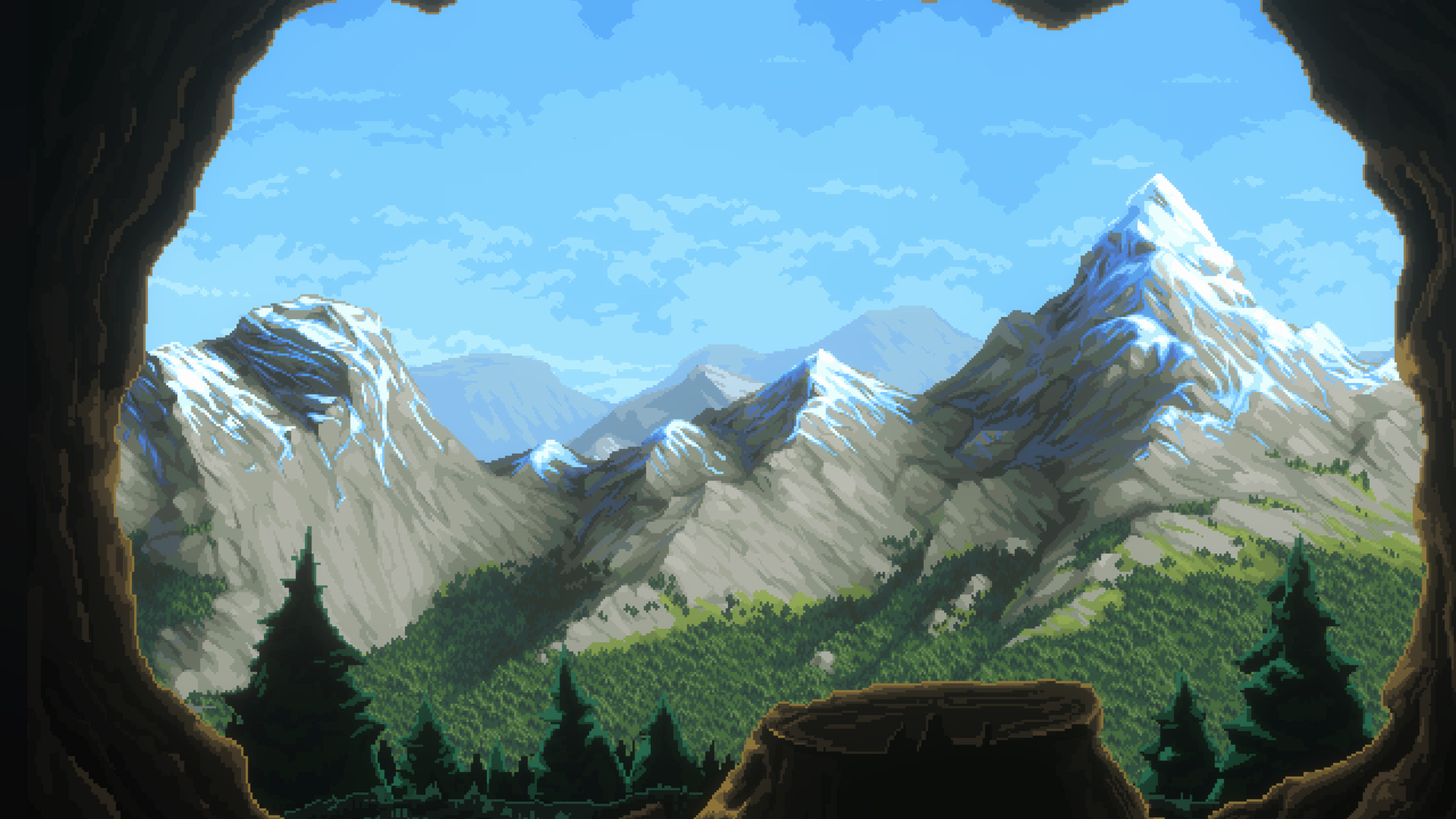
Chained Echoes begins how all the best RPGs begin: with a confrontation that is backed by war. The nations in this little world have been at war for so long that generations have become used to the bloodshed—some characters have been conscripted to one side or another, while old men and women in the streets of ancient towns cry out for an end to the eternal strife. Chained Echoes' medieval setting does a fair job of combining aspects of fantasy and science-fiction. While much of the plot is written in a stylized fashion that might have fans thinking of historical events, fantasy epics, or even the games of Yasumi Matsuno, Linda does an excellent job smoothing out the edges of all his influences so that his own characters and plot can shine.
We are immediately thrust into warfare, and the game spends little time with introductions before combat begins. While there are mech fights almost immediately, the flying armor does not return for dozens of hours and when it does, it feels special and earned. Glenn and his comrade Kylian have been fighting for their homeland for some time, and their zealotry has led them to the doorstep of an enemy that claims to have one of the most powerful weapons ever known to man: the Grand Grimoire. After failing to nab the Grimoire—and finding that this failure comes at an extremely high cost—the gameplay shifts perspectives and narratives toward Lenne, Robb, Sienna, Victor, and a whole cadre of folks whose perspectives feel just as important and just as earned as Glenn's. Linda has cited Final Fantasy VI as just one inspiration for Chained Echoes, and that design makes itself known almost immediately. The game shifts perspectives constantly, giving us a full view of the conflict that has overtaken this planet and how the coming events will shape the lives of everyone involved.
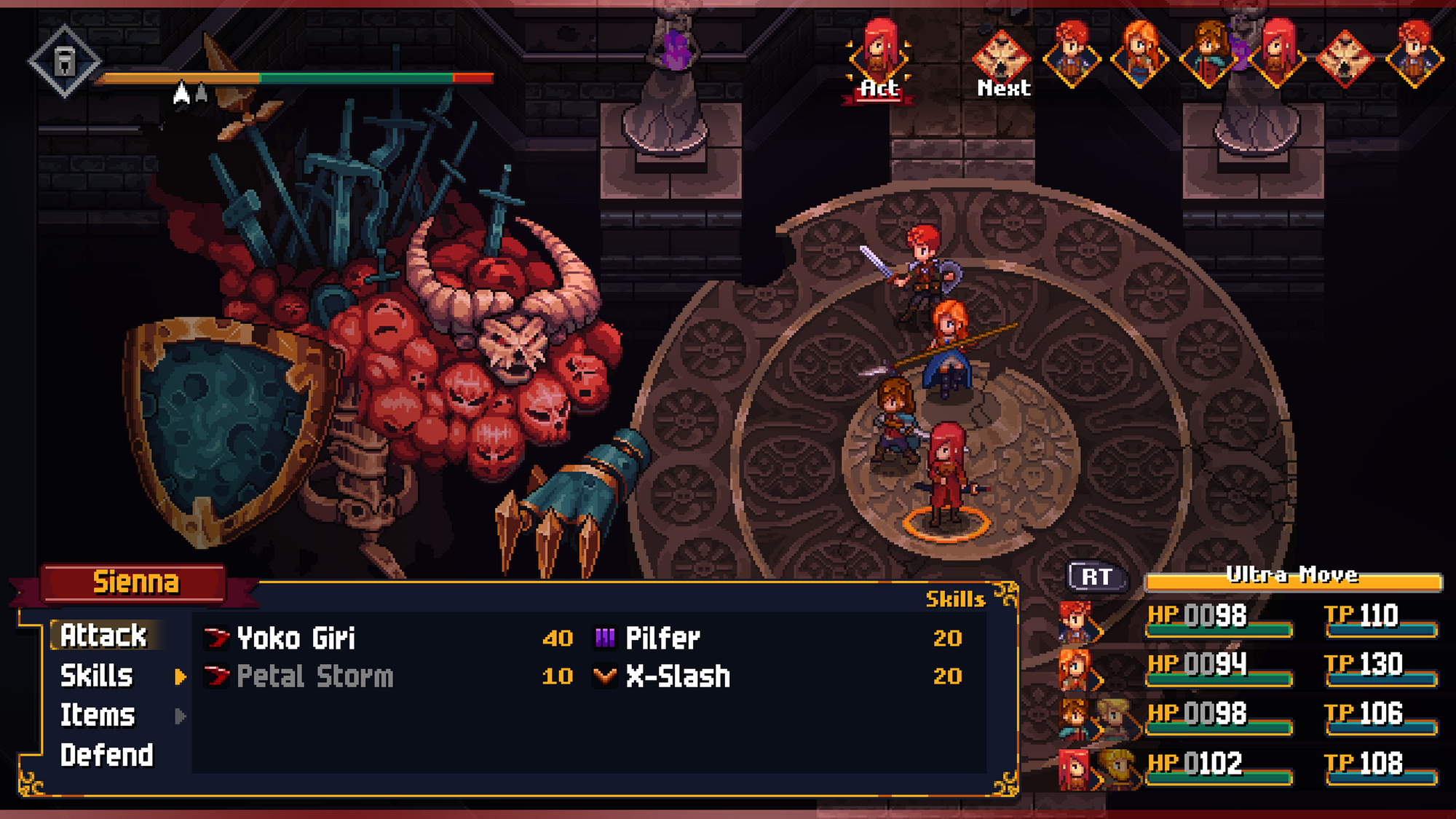
It's the inspiration of Ivalice that stood out to me in particular, both in the game's flow and in its dialogue. Matthias Linda has gone on record stating that Ivalice was an inspiration, which is particularly heartwarming considering that Matsuno is one of the greatest writers the industry has ever seen. While games emulating the style of Final Fantasy XII truly feel few and far between, Chained Echoes somehow captures the essence of it and Xenogears at once, weaving a tale that's political, catastrophic, grand, and personal.
Chained Echoes does a remarkable job of setting the stage and then allowing the characters to go on their adventure. Mishaps abound as the party treks the world (mostly) on foot, attempting to circumvent more devastation between countries only interested in winning the war at all costs. This is a game that puts the woes of the commoner front and center, showing the ugly costs of war while also granting a deeply personal perspective to most of its major characters. While the dialogue and tone can feel uneven at times, I was impressed by the clarity of the writing direction and how well-paced the adventure seemed. It's in this way that it almost feels like a Final Fantasy of old; while there are quests and momentary asides, the conflict of the story is placed front and center for a majority of the experience.
Swords and Mechs
For any RPG to be memorable, it must settle itself on a battle system that can be enjoyed across dozens and dozens of hours. Chained Echoes excels by resting its laurels on traditional expectations for the genre while also adding a new flair that shines with a depth of original mechanics.
The battle system is truly where Chained Echoes shines, and the game gifts the players not one but two separate and distinct styles of gameplay. Most of the game is spent on foot, directing the party through turn-based turns and familiar actions such as dealing combat damage, tanking, or healing. What complicates Chained Echoes' unique combat system is the Overdrive bar—every action a character makes can shift the bar to the right or the left. It's the duty of the player to keep the icon in the center of the bar—the green area—so that the party can deal the most damage and stay healthy. Too much time in the red portion of the bar will grant you a Game Over, and the player must consistently swap out characters and use attacks and spells that move the icon and keep it centered. The system adds a level of intensity to even the most casual fights and makes some of the bosses a heightened challenge that must be tackled more than once.
While in the sky-armors, each mech can "shift gears" which puts a further unique spin on the Overdrive concept. Instead of using abilities that alter the state of the Overdrive, the player must keep an eye on what gear each individual mech is in and shift away from the dangerous red zones. Even while piloting the considerably more powerful sky armor, the battle can become dangerous if the player is focused singularly on dealing damage. Battles can end surprisingly quickly if the enemy gets even one turn against a party sitting in the red zone.
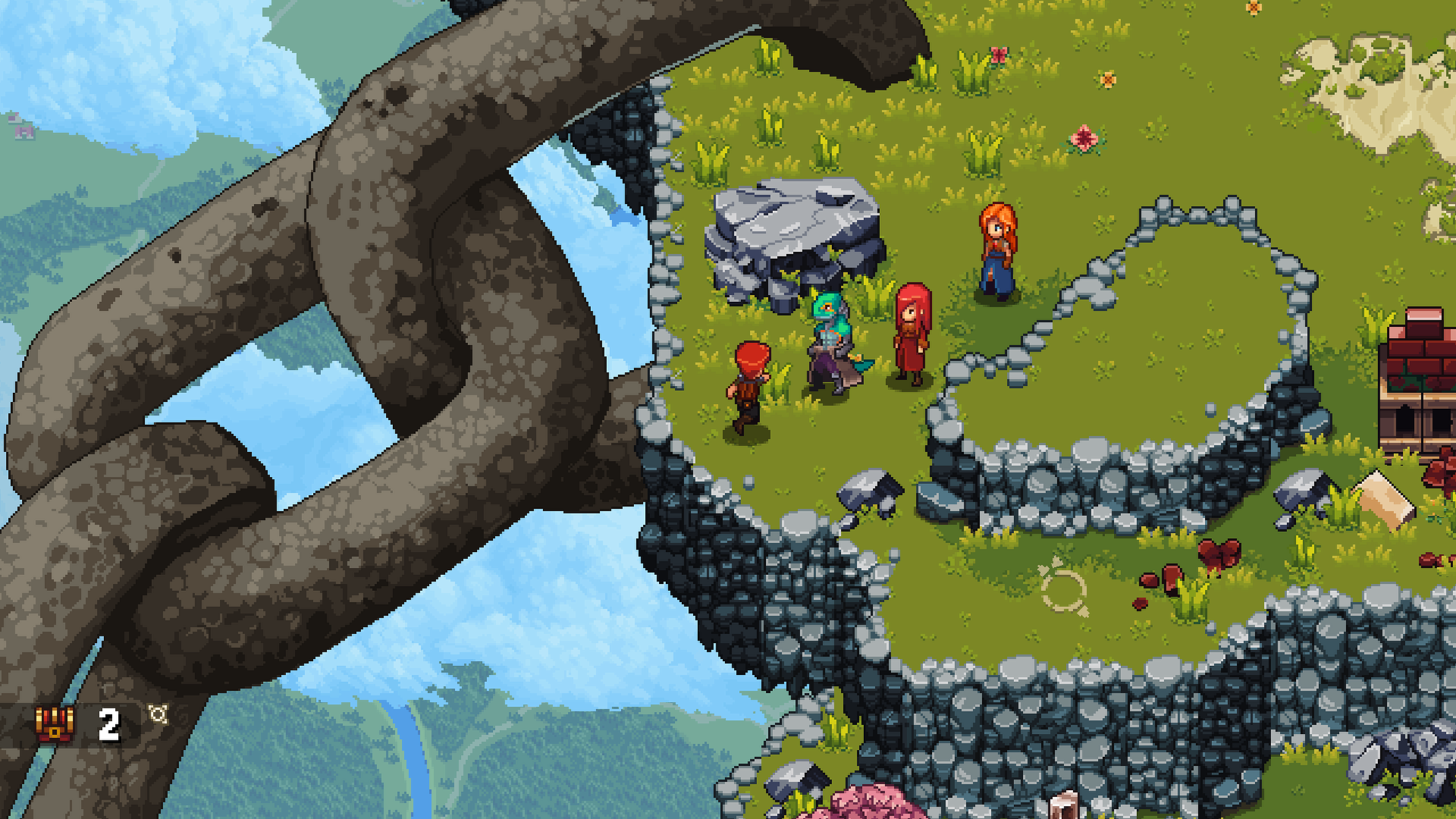
In a game that's filled with optional characters, hundreds of pieces of equipment and loot, secret caves, hidden dungeons, and more, it was a pleasant surprise to see that Linda was not satisfied with letting any individual aspect of Chained Echoes come across as "traditional" in a bad way. There are Unique Monsters to find and kill, à la the guild of Final Fantasy XII, as well as an entire board of in-game rewards that can be gleaned by performing specific actions or exploring most of an area. With secondary job classes to find, in-battle team swapping, unique roles, and Ultra Moves, as well as a fair amount of exploratory backtracking, Chained Echoes' 40-hour run time feels packed but deserved. More than once it had me wistfully thinking about the RPGs of yesteryear that were able to pack an enormous adventure into one experience without being 100 hours long and stuffed with unnecessary bloat. Chained Echoes is lean, but it is not lacking—this is an RPG especially crafted for those who love RPGs.
A True King
What brings Chained Echoes home is its music. The compositions by Eddie Marianukroh, such as Rohlan Fields and The Dancing City of Farnsport carry that classically adventurous air of the RPG, while battle themes such as Calling Upon Bravery and Finding Your Way are threaded with adrenaline and spirit. The entire soundtrack is one of the most gorgeous pieces of music I've heard all year, and it wholeheartedly sets the stage for many of Chained Echoes' finest moments. Considering the nature of the battle system or the complexity of many of the game's utterly gorgeous locations, it's impressive that Marianukroh was able to craft a soundtrack that is simultaneously eclectic and thematic. Combined with Linda's beautiful art, Chained Echoes feels like the comfort RPG I've been anticipating for years.
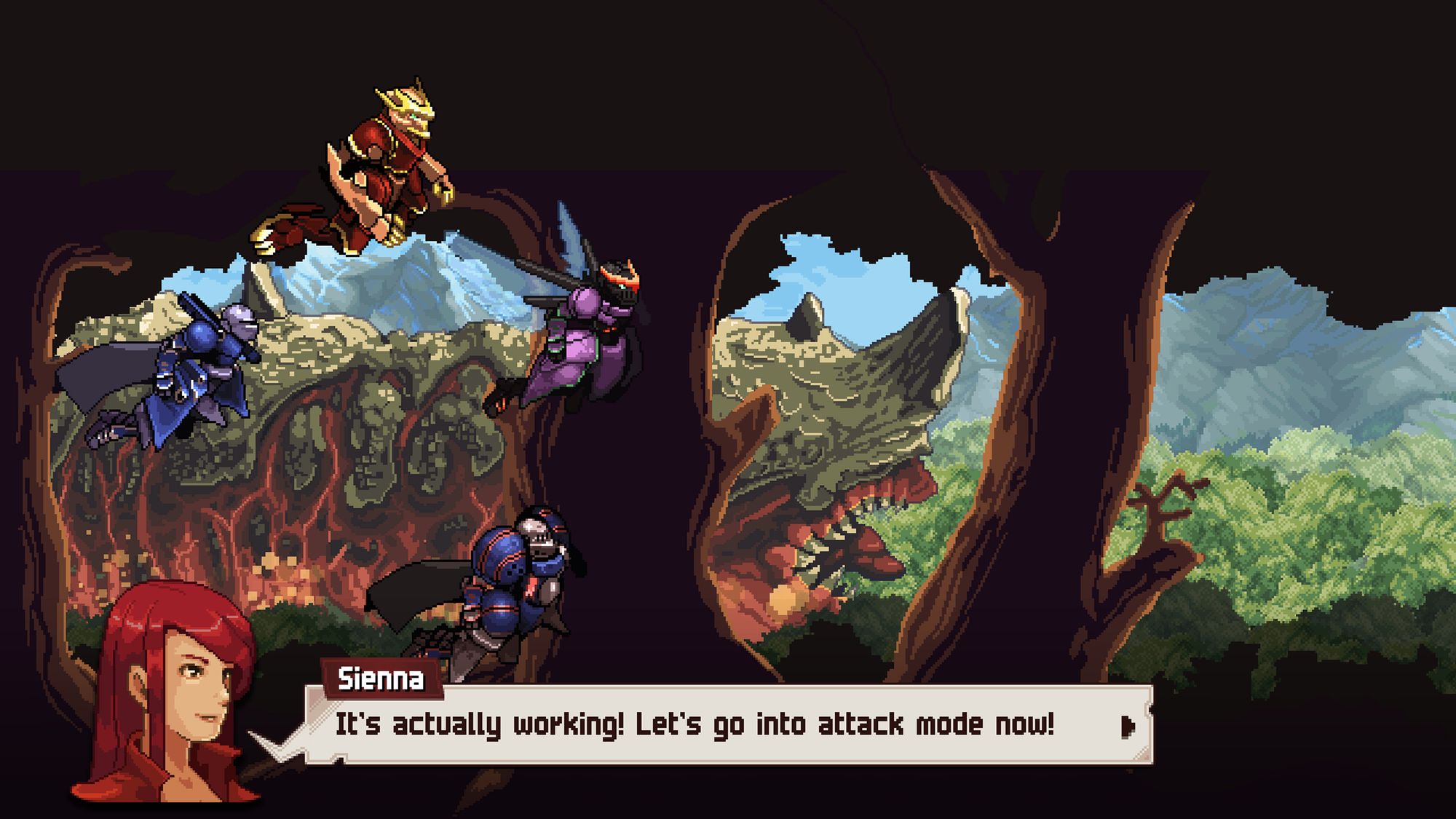
My only regret is that I do not have 1,000 words alone to spend gushing over Linda's jaw-dropping pixel art or cinematic scope. It's unfair to solely cite ancient RPGs as the influence for Chained Echoes when many of its locations feel like they can deservedly stand alone. Chained Echoes is a game built among a lifetime of inspirations and influences, cited as a "childhood dream come true" by the solo developer. A child of the golden era of RPGs, it's obvious that Linda wanted to give back to the experiences that shaped his taste—his cited inspirations include Legend of Dragoon, Terranigma, Breath of Fire, and Suikoden 2. Many developers have taken a crack at emulating this "retro" style in the last decade, including Square Enix's interesting but lackluster I Am Setsuna and Lost Sphear. But there were dozens of moments throughout Chained Echoes where I felt so excited and so respected by the game's design that I was pulled into experiences that I have not had in twenty years.
Ultimately, Chained Echoes' strength lies in how its many systems converge into one beautiful synthesis—it might be derived from dozens of inspirations across a vast genre, but it stands tall as its own experience. My hope is that the game reaches a new audience and that we stand on the precipice of yet another renaissance of classical RPGs.
Comments
Sign in or become a SUPERJUMP member to join the conversation.
